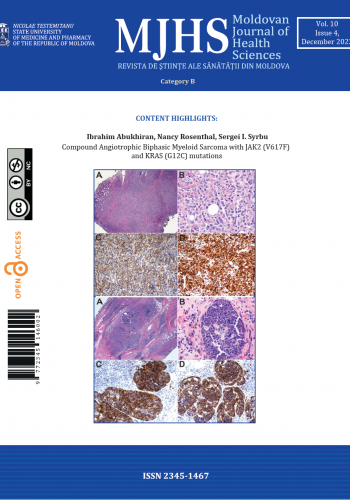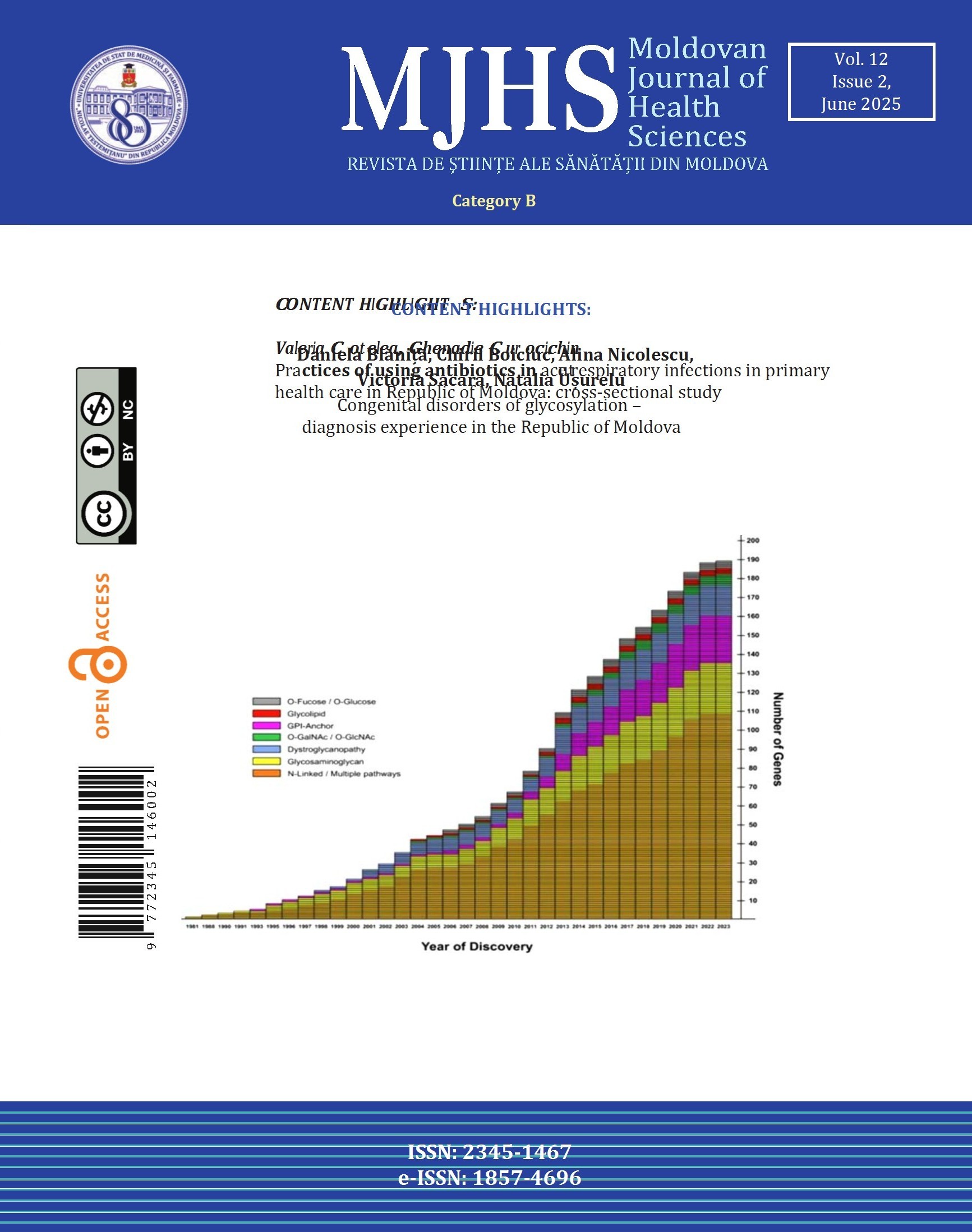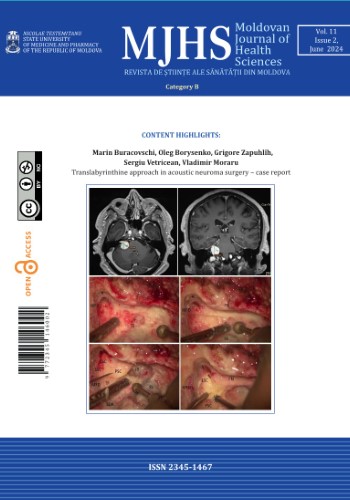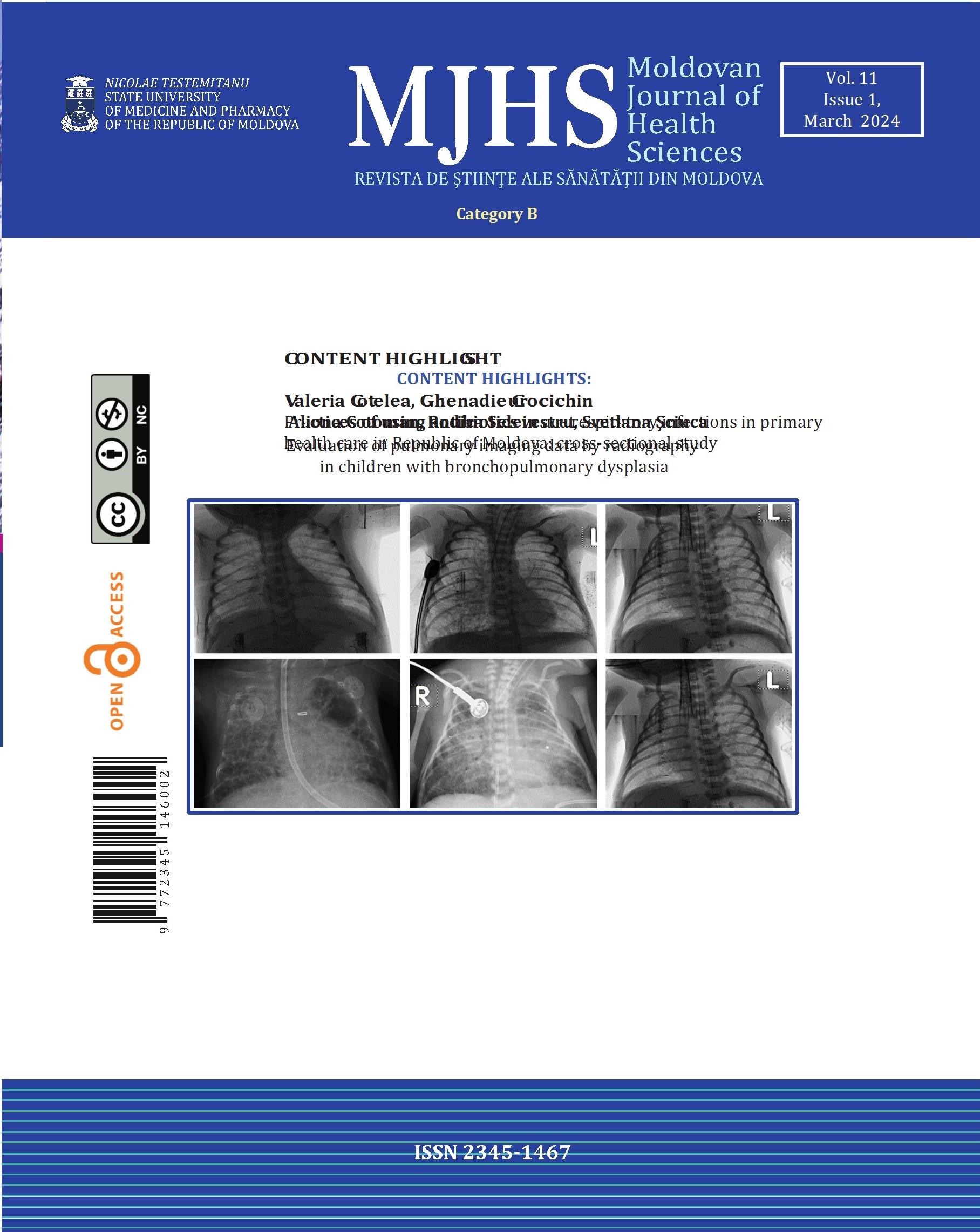Endogenous hepatic toxicity and oxidative stress in the complications of gallstones associated with cholestatic jaundice
https://doi.org/10.52645/MJHS.2023.4.01
Introduction
Cholestatic jaundice installed in gallstones is considered a multifactorial pathogenetic process. The correlation of endogenous hepatic intoxication with the reaction of the pro- and antioxidant system, characteristic of various complications of gallstones associated with cholestatic jaundice, remains an undefined subject.
Material and methods
The study included the investigation of 105 patients with complicated gallstones and associated cholestatic jaundice, and the control group – 35 patients with uncomplicated gallstones. The age of the patients varied between 51 and 72 years, with an F/M ratio of 3/1.
Results
The degree of endotoxemia, assessed at hospitalization by peptides with average mass values, was consistent with the inflammation present in groups 2 and 3, reporting a statistically significant difference compared to the control group [p c/2 < 0.001 (t = 11.1); p c/3 < 0.001 (t = 11.07)]. DAM, as the final product of lipid peroxidation, evaluated at hospitalization, shows double marked values in all groups compared to the control group [p < 0.001 (t = 10.7); (t = 10.9); (t = 16.5)]. The antioxidant activity, assessed at hospitalization, shows a statistically significant decrease in superoxide dismutase values [p < 0.001 (t = 6.4); (t = 4.1); (t = 5.7)], as well as catalase [p < 0.001 (t = 6.7); (t = 5.6); (t = 7.2)] in all groups, by 30-40% compared to the control group.
Conclusions
In established cholestatic jaundice, there is an obvious activation of lipoperoxidation processes, contributing to the increase of endogenous intoxication and early suppression of antioxidant activity. There is a direct relationship between the increase in prooxidant activity and the level of endogenous intoxication in all complications of gallstones associated with cholestatic jaundice, but it is more elevated in infectious complications, indicating a need for an early approach.






